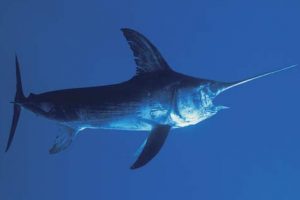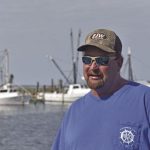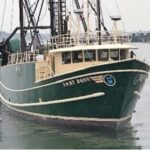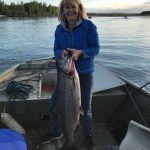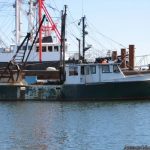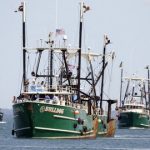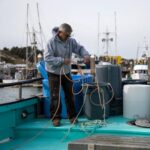Tag Archives: Lobster Fishing Area 34
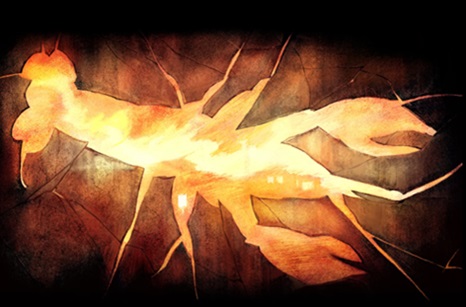
Nova Scotia’s Billion-Dollar Lobster Wars
At the River Café, the Michelin-recommended restaurant on the Brooklyn waterfront where the term “free-range chicken” was coined, the lobster is served butter-poached next to a pool of lemon-grape sauce, to brighten its tender brininess. The chef, Brad Steelman, insists on lobster from the cold waters of Nova Scotia, because this insures a hard shell and robust meat. Not so long ago, good lobster could be found closer to the city. Historically, there were strong harvests as far south as New Jersey. Private-equity firms and seafood conglomerates have swallowed many of North America’s fisheries. But, in Nova Scotia, most lobstermen are independent. But many inshore fishermen have also resisted a recent entrant to the power struggle: the Mi’kmaq, the most populous group of Indigenous people in Atlantic Canada. more, >>CLICK TO READ<< 06:58
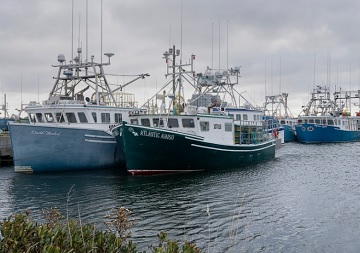
Finally! Lobster season kicks off in southwestern Nova Scotia
One the country’s most profitable lobster fishing areas opened for the season Monday after being held back by weather-related delays. The Coldwater Lobster Association says opening day, referred to as dumping day, for Nova Scotia’s lobster fishing area 34 officially began at 6 a.m. The area was slated to open for the season this past Monday, but it was postponed due to storm and wind conditions. >click to read< 07:33
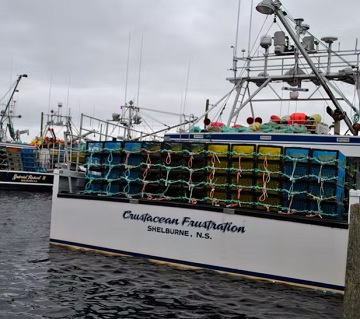
Low prices, high costs face southwest Nova Scotia lobster fishermen
As captains and crews wait for an opening in the weather to drop their gear off southwest Nova Scotia, they’ve also got other big worries: low prices for their catch and historically high costs. The price at the wharf is expected to be somewhere around $6 to $6.25 a pound, down nearly half from $11.25 on opening day for Lobster Fishing Area 34 last season. The neighbouring LFA 33, which runs from about Halifax to Cape Sable Island, opened earlier this week but weather has meant most captains there have only had the opportunity to haul their traps once. >click to read< 16:08

Opening days delayed for Canada’s largest and most lucrative lobster fisheries
The opening days for two of Canada’s largest and most profitable lobster fisheries have been delayed because of bad weather. The federal Fisheries Department says it is delaying by one day — to Tuesday — the opening of Lobster Fishing Area 33, which extends from Cow Bay in Halifax County south to Port La Tour, in Shelburne County. Meanwhile, the department has yet to announce the opening day for Lobster Fishing Area 34, which extends from Shelburne County around to the southwest coast of the province, because Environment Canada is forecasting gale conditions into Tuesday. Video, >click to read< 14:10
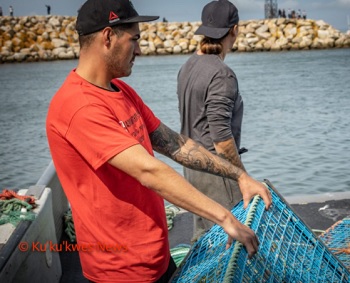
Sipekne’katik fisherman says delay in fishery launch the smart decision for now
Robert Syliboy, a member of the Sipekne’katik First Nation in Nova Scotia, said his community’s decision to delay the start of its own fishery this week was the smart thing to do for now. “,, Sipekne’katik Chief Mike Sack said concerns over safety is the main reason he and council members decided to postpone the start of the First Nation’s fishery for the time being. Lobster Fishing Area 34 in St. Mary’s Bay is currently closed to commercial fishing until the last week in November. >click to read< 08:07
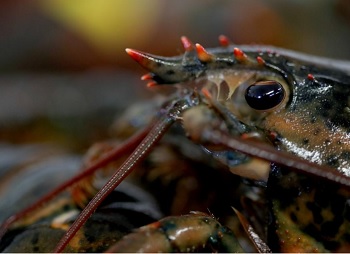
The lobster population in Canada’s most important harvesting area is healthy and is not overfished
The 20,000-square-kilometre fishing ground off southwestern Nova Scotia and into the Bay of Fundy, known as Lobster Fishing Area 34, accounts for 20 per cent of all lobster landed in Canada and 10 per cent of North American landings. “The stock is considered to be in the healthy zone. Furthermore, as the relative fishing mortality is below the removal indicator in all four survey indices, overfishing is not occurring,” the report concluded. The latest assessment, which ended in 2019, used commercial landings and several independent trawl surveys to evaluate the stock status. >click to read< 09:50
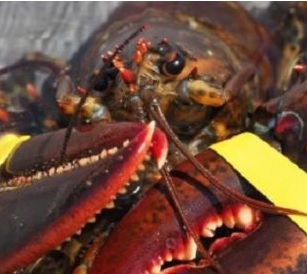
Indigenous fishermen to assert treaty right for lobster fishing during court case
The stage is now set in Nova Scotia for another round in the court battles over Indigenous fishing rights. The lawyer for four Mi’kmaw fishermen appeared by phone Tuesday in Yarmouth provincial court. The men admit they were fishing for lobster aboard the vessel Charlene Helen off Pinkney’s Point, Yarmouth County, in September 2019. The area they were fishing in is part of Lobster Fishing Area 34, which was closed to fishing activity at the time. >click to read< 08:56

Lobster Fishing Area 34 took to the water early Tuesday morning – They departed around 4 a.m.
Crews in part of Nova Scotia’s largest and most lucrative commercial lobster fishery dumped their traps Tuesday, launching the season more than a week late because of weather-related delays. The start of the commercial season in southwest Nova Scotia, known as Dumping Day, was staggered this year, with Lobster Fishing Area 33 starting on schedule last Monday, while Lobster Fishing Area 34 was delayed. Fishing vessels and crews in LFA 34 have been waiting on standby, and finally got the go-ahead Monday evening to take to the water early Tuesday. >click to read< 08:56

Sipekne’katik backs out of commercial lobster season citing fears over safety
The decision followed an emergency meeting Friday with fishermen working in the band’s commercial fishery. “The consensus is that they don’t want to fish in the upcoming season due to concerns of safety. There is also the concern of not being able to sell our lobster,” said Chief Mike Sack. “As of right now, our people aren’t comfortable taking that big risk and especially risking their life for that.”Sipekne’katik’s decision means band members won’t fish the nine lobster licences Sipekne’katik holds in Lobster Fishing Area 34 when the season opens next month. >click to read< 21:02
Indigenous, commercial lobster fishermen clash in Digby County
 The Sipekne’katik Band is accusing southwestern Nova Scotia lobster fishermen of throwing native fishing rights overboard. “There has been protesting and people are interfering with my people exercising their rights,” Chief Mike Sack said Thursday of a fleet of about 10 boats operated by the band that has been fishing lobster from different wharfs in St. Mary’s Bay in Digby County. “It has been escalating quickly over the last little bit.” Sack said local non-native fishermen from Lobster Fishing Area 34, the most lucrative lobster waters in Canada that encompasses an area from Baccaro Point to just below Digby, do not recognize native treaty rights to fish out of season. click here to read the story 22:57
The Sipekne’katik Band is accusing southwestern Nova Scotia lobster fishermen of throwing native fishing rights overboard. “There has been protesting and people are interfering with my people exercising their rights,” Chief Mike Sack said Thursday of a fleet of about 10 boats operated by the band that has been fishing lobster from different wharfs in St. Mary’s Bay in Digby County. “It has been escalating quickly over the last little bit.” Sack said local non-native fishermen from Lobster Fishing Area 34, the most lucrative lobster waters in Canada that encompasses an area from Baccaro Point to just below Digby, do not recognize native treaty rights to fish out of season. click here to read the story 22:57
Lobster catches taking nose dive in southern Nova Scotia
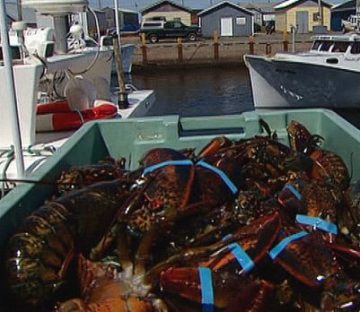 Ashton Spinney, co-chair of the Lobster Advisory Committee for Lobster Fishing Area 34, says only half as many lobsters as usual are being brought ashore this spring. “The water temperature is cold. It hasn’t warmed up. And the lobsters aren’t crawling into the traps,” said Spinney in an interview Friday. With fuel, bait and salaries for deckhands climbing with inflation in recent years, the paucity of lobsters this spring is leaving many fishers wondering if they’ll even be able to break even before the fishery ends on May 31. “There are some that are finding it hard,” said Spinney. “Those that fished 50 miles out last year and would stay out there, this year they’re not finding enough lobsters to stay out there. So they’re coming in close to the shore, hoping to find some lobsters.” The longtime lobster fisherman says it’s just as bad in Lobster Fishing Area 33. click here to read the story 11:24
Ashton Spinney, co-chair of the Lobster Advisory Committee for Lobster Fishing Area 34, says only half as many lobsters as usual are being brought ashore this spring. “The water temperature is cold. It hasn’t warmed up. And the lobsters aren’t crawling into the traps,” said Spinney in an interview Friday. With fuel, bait and salaries for deckhands climbing with inflation in recent years, the paucity of lobsters this spring is leaving many fishers wondering if they’ll even be able to break even before the fishery ends on May 31. “There are some that are finding it hard,” said Spinney. “Those that fished 50 miles out last year and would stay out there, this year they’re not finding enough lobsters to stay out there. So they’re coming in close to the shore, hoping to find some lobsters.” The longtime lobster fisherman says it’s just as bad in Lobster Fishing Area 33. click here to read the story 11:24
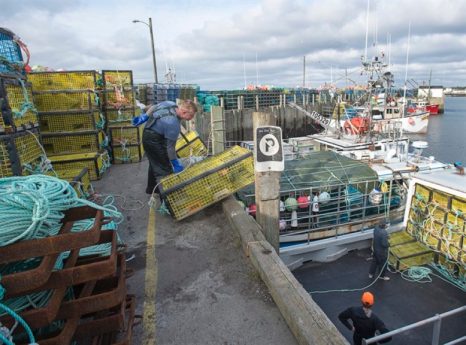
‘Dumping Day’ docked by blustery forecasts in effort to make lobster hunt safer
Safety is of the utmost importance to today’s lobster fishers. And safety holds special significance for old-timers to whom the precautionary measures are a mournful reminder of sailors who paid the ultimate price in pursuit of Canada’s most valuable sea-dwelling commodity. “We try to make Dumping Day safe as we can,” says longtime lobsterman Ashton Spinney. “Still, there’s danger … Unforeseen accidents happen. “Spinney is a member of the body that oversees Lobster Fishing Area 34 (LFA 34) in southwestern Nova Scotia — an approximately New Jersey-sized body of water that has the largest catches of Canada’s 41 lobster fishing districts. Canada’s billion-dollar lobster business remains the most lucrative fishery the country and a crucial economic engine on the East Coast, employing about 30,000 harvesters in the Atlantic provinces. Spinney, who is coming up on his 60th Dumping Day, says in his early years, fishers would set out to sea in up to 130 kilometre per hour winds, restricted only by time and nautical nerve. He says the rules have since changed to only allow boats to set sail if the weather permits safe travel. Contingencies like this have likely spared lives in recent years, Spinney says, but still today, every angler risks life and limb upon exiting the harbour. – Read the rest here 11:21
Fishermen raise concerns over proposed measures that could harm lobster fishery
 It was a concerned and frustrated group of fishermen that met with DFO officials Thursday in Yarmouth during a special meeting of the Lobster Fishing Area 34 Advisory Committee. The fishermen say proposed measures to help in the recovery of the cusk population – including a potential 10 per cent trap reduction for lobster licence holders – are based on incorrect data and, if implemented, would hurt the lobster industry. The LFA committee passed a motion to have another meeting in June, once the lobster season is over, with DFO and others to discuss the issue further. Fishermen attending the March 17 session said there doesn’t seem to be a problem with the cusk population and that the measures DFO is considering are unnecessary. Read the rest here 08:12
It was a concerned and frustrated group of fishermen that met with DFO officials Thursday in Yarmouth during a special meeting of the Lobster Fishing Area 34 Advisory Committee. The fishermen say proposed measures to help in the recovery of the cusk population – including a potential 10 per cent trap reduction for lobster licence holders – are based on incorrect data and, if implemented, would hurt the lobster industry. The LFA committee passed a motion to have another meeting in June, once the lobster season is over, with DFO and others to discuss the issue further. Fishermen attending the March 17 session said there doesn’t seem to be a problem with the cusk population and that the measures DFO is considering are unnecessary. Read the rest here 08:12
Coldwater Lobster Association wants more members, says many issues facing Nova Scotia industry
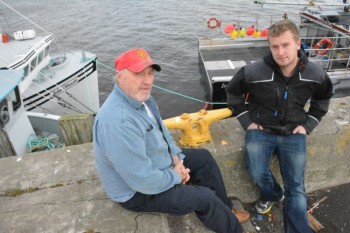 Coldwater Lobster Association, covering Lobster Fishing Area 34 in southwestern Nova Scotia, says there are issues that could have dire outcomes on the lobster industry. The association has around 80 members but says it would have more clout at the table with DFO and other groups if it was speaking for a larger percentage of the industry. One issue is a pending decision on whether to list cusk under the Species at Risk Act. COSEWIC(Committee on the Status of Endangered Wildlife in Canada) is collecting opinion online and through consultations until March 18. The committee says the mature portion of the cusk population has declined by 85 per cent over three generations. Read the rest here 11:29
Coldwater Lobster Association, covering Lobster Fishing Area 34 in southwestern Nova Scotia, says there are issues that could have dire outcomes on the lobster industry. The association has around 80 members but says it would have more clout at the table with DFO and other groups if it was speaking for a larger percentage of the industry. One issue is a pending decision on whether to list cusk under the Species at Risk Act. COSEWIC(Committee on the Status of Endangered Wildlife in Canada) is collecting opinion online and through consultations until March 18. The committee says the mature portion of the cusk population has declined by 85 per cent over three generations. Read the rest here 11:29

































